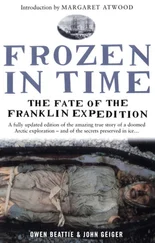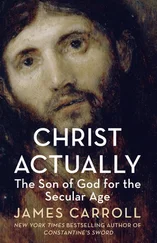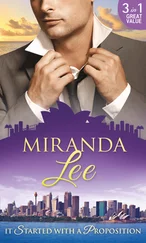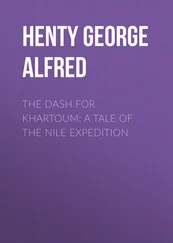The screen lit up with computer-generated images of an ancient city. Above a valley rose a settlement of red walls and tiled roofs, surrounded by a triple outer wall. The streets were full of people going about their daily routines. Andrea was amazed by the quality of the images, worthy of a Hollywood production, but the voice narrating the documentary was that of the professor. This guy’s got such a huge ego he can’t even hear how lousy his voice sounds , she thought . He’s giving me a headache . The voiceover began:
Welcome to Jerusalem. It is April in the year AD 70. The city is in its fourth year of occupation by rebel zealots, who have expelled the original inhabitants. The Romans, officially the rulers of Israel, can no longer tolerate the situation and Rome charges Titus to administer a decisive punishment.
The peaceful scene of women filling their water vessels and children playing beside the outer walls near the wells was interrupted as distant banners crowned by eagles appeared on the horizon. Trumpets sounded and the children, suddenly frightened, ran back inside the walls.
Within a few hours the city is surrounded by four Roman legions. This is the fourth attack on the city. Its citizens have repelled the previous three. This time Titus uses a cunning trick. He allows the pilgrims entering Jerusalem for the Easter celebrations to cross the line of battle. After the festivities, the circle is closed, and Titus does not allow the pilgrims to leave. The city now contains twice as many people and its food and water supplies are quickly being depleted. The Roman legions launch an attack from the northern side of the city and knock down the third wall. It is now the middle of May, and the fall of the city is only a matter of time.
The screen displayed a battering ram destroying the outer wall. From the city’s highest hill temple priests witnessed the scene with tears in their eyes.
The city eventually falls in September, and Titus fulfils the promise he made to his father, Vespasian. The majority of the city’s inhabitants are executed or dispersed. Their homes are looted and their temple, destroyed.
Surrounded by corpses, a group of Roman soldiers carried a gigantic menorah out of the burning temple while their general looked on from his horse, smiling.
The second temple of Solomon was burned to its foundations, and remains thus to this day. Many of the temple’s treasures were stolen. Many, but not all. After the fall of the third wall in May, a priest by the name of Yirməyáhu had come up with a plan to save at least part of the treasure. He chose a group of twenty brave men, giving packages to the first twelve with precise instructions on where the items should be taken and what should be done with them. These packages contained the temple’s more ‘conventional’ treasures: large amounts of gold and silver.
An old priest with a white beard and dressed in a black robe was talking with two young men as others waited their turn in a large stone cave lit by torches.
Yirməyáhu entrusted the last eight men with a very special mission, ten times more dangerous than that of the others.
Holding a torch, the priest led the eight men, who were carrying a large object with the aid of a litter, through a network of tunnels.
Using the secret passages under the temple, Yirməyáhu led them beyond the walls and away from the Roman army. Although that area, at the rear of the 10th Fretensis Legion, was patrolled from time to time by Roman guards, the priest’s men managed to elude them, reaching Yəriho, the modern-day Jericho, with their heavy load the following day. And there the trail disappears for good.
The professor pressed a button and the screen went dark. He turned to the audience, who were waiting expectantly.
‘What those men did was quite incredible. They travelled fourteen miles carrying an enormous load in roughly nine hours. And that was only the beginning of their trip.’
‘What were they carrying, Professor?’ Andrea asked.
‘I suppose it was the most valuable piece of treasure,’ Harel said.
‘All in good time, my dears. Yirm əyáhu went back inside the city and spent the next two days writing a very special manuscript on an even more unusual scroll. It was a detailed map with instructions on how to recover the different portions of the treasure that had been salvaged from the temple… but he couldn’t manage the work alone. It was a verbal map, etched into the surface of a copper scroll almost ten feet long.’
‘Why copper?’ asked someone at the back.
‘Unlike papyrus or parchment, copper is extremely durable. It is also very difficult to write on. It took five people to complete the inscription in a single session, at times taking turns. When they had finished, Yirm əyáhu divided the document into two parts, giving the first to a messenger with instructions for its safekeeping at a community of Yisseyites who lived near Jericho. The other part he gave to his own son, one of the kohanim , a priest like himself. We know this much of the story firsthand because Yirm əyáhu wrote it down in its entirety on the copper manuscript. After that, all trace of it was lost for 1,882 years.’
The old man paused to take a sip of water. For a moment he no longer looked like a wrinkled, pompous puppet but seemed more human.
‘Ladies and gentlemen, you now know more of this story than most of the experts in the world. Nobody has figured out exactly how the manuscript was written. Nevertheless, it became quite famous when one part of it surfaced in 1952 in a cave in Palestine. It was among the 85,000 or so fragments of text that have been found in Qumran.’
‘Is this the famous Copper Scroll of Qumran?’ Dr Harel asked.
The archaeologist once again turned on the screen, which now displayed an image of the famous scroll: a curved plate of dark green metal covered in barely legible writing.
‘That is how it is referred to. Researchers were immediately struck by the unusual nature of the discovery, as much by the odd choice of writing material as by the inscriptions themselves – none of which could be properly deciphered. What remained clear from the start was that it was a list of treasure containing sixty-four items. The entries gave an idea of what would be found and where. For example, “At the bottom of the cave that is forty paces to the east of Achor Tower, dig three feet. There you will find six bars of gold.” But the directions were vague and the quantities described seemed so unreal – something like two hundred tons of gold and silver – that the “serious” researchers thought it had to be some kind of myth, a hoax or a joke.’
‘It seems a lot of effort for a joke,’ said Tommy Eichberg.
‘Exactly! Excellent, Mr Eichberg, excellent, especially for a driver,’ said Forrester, who seemed incapable of paying the slightest compliment without an accompanying insult. ‘In AD 70 there were no hardware stores. An enormous plate of ninety-nine per cent pure copper must have cost a great deal. Nobody would have chosen to write a piece of fiction on such a precious surface. There was a ray of hope. Item Number sixty-four was, according to the Qumran Scroll, “a text such as this, with instructions and a code for finding the objects described”.’
One of the soldiers raised his hand.
‘So this old guy, this Yermijacko…’
‘Yirməyahu.’
‘Whatever. The old guy cut the thing in two, and each part held the key to finding the other?’
‘And both had to be together in order to find the treasure. Without the second scroll there was no hope of figuring things out. But eight months ago, something happened…’
‘I’m sure your audience would prefer the shorter version, Dr,’ said Father Fowler with a smile.
Читать дальше
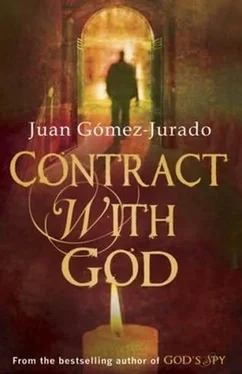
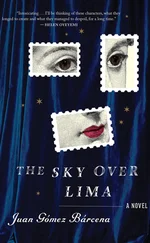
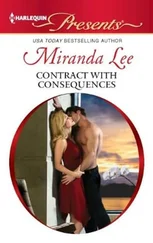
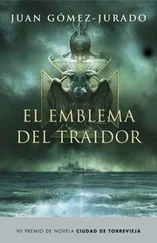

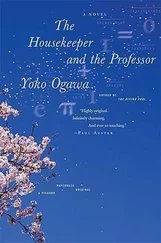
![Traudl Junge - Hitler's Last Secretary - A Firsthand Account of Life with Hitler [aka Until the Final Hour]](/books/416681/traudl-junge-hitler-s-last-secretary-a-firsthand-thumb.webp)
